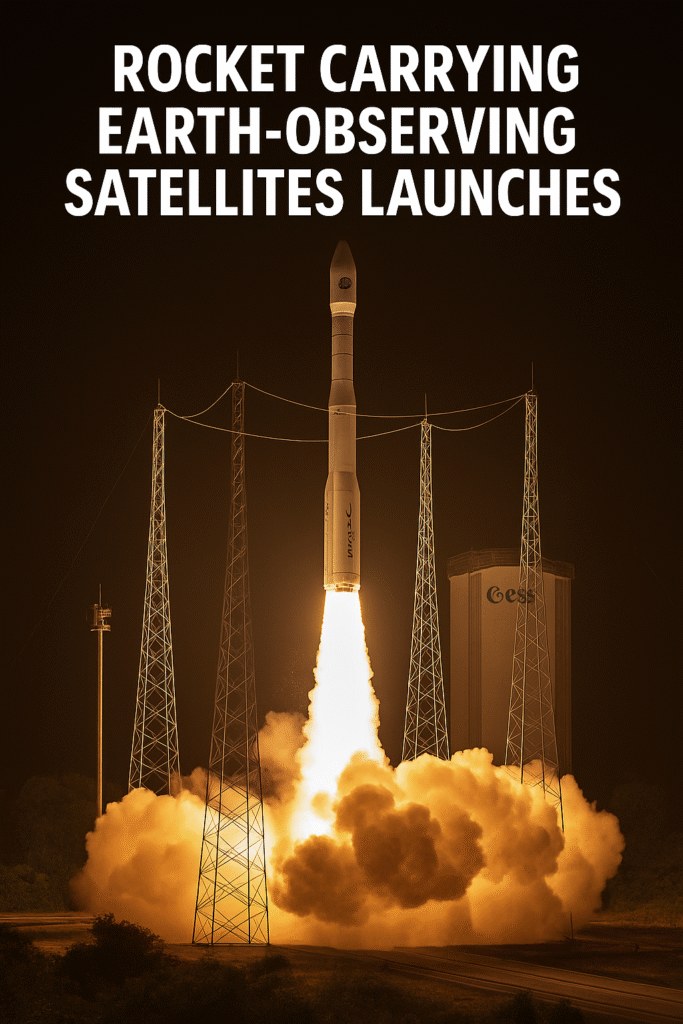KOUROU, FRENCH GUIANA — July 26, 2025:
In a significant stride for climate and Earth observation research, a Vega C rocket successfully lifted off from the Guiana Space Center late Friday night, carrying a group of advanced satellites aimed at monitoring both Earth’s surface and atmospheric carbon dioxide levels.
The launch occurred at 11:03 PM local time (0203 GMT), according to live reports from the scene. The mission, managed by French aerospace company Arianespace, marked the third launch from Europe’s spaceport this year and the second mission for the Vega C rocket in 2025.
Payload: Earth Imaging and CO2 Tracking
Onboard the rocket were five state-of-the-art satellites commissioned by Airbus Defence and Space in collaboration with France’s National Centre for Space Studies (CNES).
These satellites have two primary objectives:
- Earth Observation Constellation: A fleet of satellites designed to deliver high-resolution, three-dimensional images of Earth. These will aid in geographical mapping, environmental monitoring, and urban planning over the next six years.
- Carbon Monitoring Satellite: A specialized satellite developed to track greenhouse gas emissions, particularly carbon dioxide (CO2). It will help scientists pinpoint both the sources (emissions) and sinks (absorptions) of CO2 across the globe.
A Mission for Climate Insight
David Cavailloles, CEO of Arianespace, emphasized the importance of this launch in understanding climate change and global warming.
“This mission brings critical data to the table in our fight against climate change. These satellites will provide the clarity we need to understand and mitigate environmental threats,” he said.
The carbon-monitoring satellite is expected to remain operational for at least five years, continuously collecting data on how CO2 moves through Earth’s atmosphere.
What’s Next for European Space Missions?
The success of the Vega C launch adds momentum to Europe’s growing presence in space exploration and environmental research. The next highly anticipated event is the launch of the new Ariane 6 rocket, Europe’s powerful heavy-lift vehicle, scheduled for August.
Key Highlights:
- Launch Vehicle: Vega C
- Launch Location: Guiana Space Center, French Guiana
- Time of Launch: 11:03 PM (0203 GMT)
- Payload: 5 satellites — 3D Earth imaging & CO2 monitoring
- Mission Duration: Earth imaging (6 years), CO2 satellite (5 years)
- Managed By: Arianespace, Airbus Defence, CNES
Hashtags (SEO Optimized):
#VegaCLaunch
#Arianespace
#EarthObservation
#ClimateChangeMonitoring
#CO2Satellite
#FrenchGuianaSpaceport
#Ariane6
#SatelliteImagery
#GlobalWarmingScience
#SpaceNews2025
#EnvironmentalMonitoring
#SpaceExplorationEurope
#CarbonTrackingSatellite
#GuianaSpaceCenter
#SpaceLaunchNews



